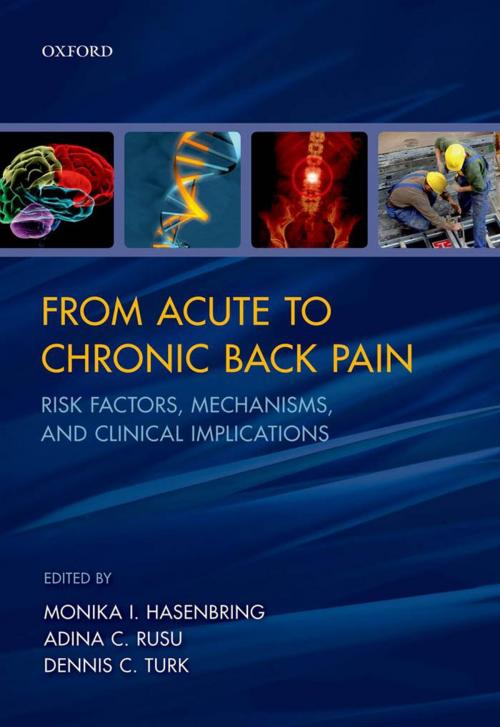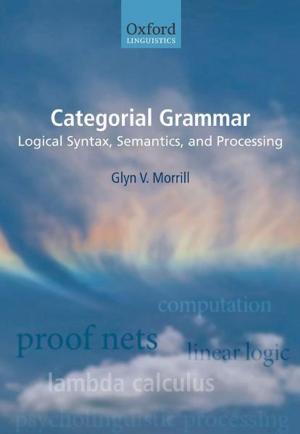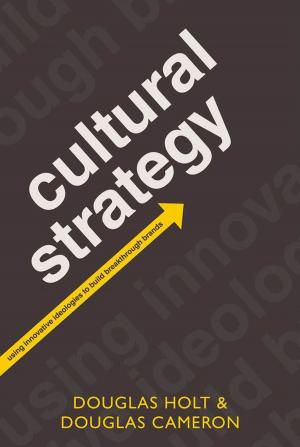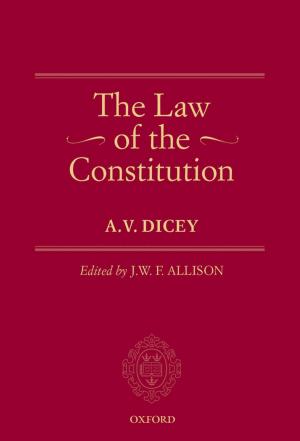From Acute to Chronic Back Pain
Risk Factors, Mechanisms, and Clinical Implications
Nonfiction, Health & Well Being, Medical, Patient Care, Pain Medicine, Science & Nature, Science| Author: | ISBN: | 9780191625725 | |
| Publisher: | OUP Oxford | Publication: | January 19, 2012 |
| Imprint: | OUP Oxford | Language: | English |
| Author: | |
| ISBN: | 9780191625725 |
| Publisher: | OUP Oxford |
| Publication: | January 19, 2012 |
| Imprint: | OUP Oxford |
| Language: | English |
Chronic back pain has been and continues to be a major cause of distress (both to people with persistent pain and their significant others), disability, work loss, and a huge cost to society. Moreover, with the aging population, it is becoming even more prevalent and as a consequence is having an escalating impact upon the healthcare systems and society as a whole worldwide. A significant issue concerns understanding why, although the majority of people with acute back symptoms recover in a reasonable time, a significant minority evolve into patients with chronic pain and prolonged pain-related disability. Understanding the variables that contribute to chronicity could serve as a basis for early intervention to prevent the downward spiral. In the past 15 years, psychological and psychobiological mechanisms have been identified as important risk factors in back pain, leading to the development of early screending methods (Yellow Flag diagnostics) and new psychosocial interventions. These work by closely targeting treatment modalities to patients' needs. However, many aspects of how acute pain becomes chronic pain remain unexplained. Recent neurobiological work investigating genetic, neurophysiological, and biomechanical processes has uncovererd important mechanisms involved in chronic and acute back pain. From Acute to Chronic Back Pain examines the risk factors and mechanisms involved in the transition from acute to chronic back pain. It integrates genetic, biomechnanical neurobiological, psychophysiological, psychosocial, and socieconomic risk factors. Moreover, the text examines advances in treatment approaches based on evidence from published studies-ranging from prevention of disability to pharmacological, psychological, and rehabilitative strategies and methods. Broad in scope, and with contributions from leading authorities in their respective fields, this book is a valuable and comprehensive work for the many specialities involved with back pain - including those in the fields of clinical and health psychology, physiology, epidemiology, and pain.
Chronic back pain has been and continues to be a major cause of distress (both to people with persistent pain and their significant others), disability, work loss, and a huge cost to society. Moreover, with the aging population, it is becoming even more prevalent and as a consequence is having an escalating impact upon the healthcare systems and society as a whole worldwide. A significant issue concerns understanding why, although the majority of people with acute back symptoms recover in a reasonable time, a significant minority evolve into patients with chronic pain and prolonged pain-related disability. Understanding the variables that contribute to chronicity could serve as a basis for early intervention to prevent the downward spiral. In the past 15 years, psychological and psychobiological mechanisms have been identified as important risk factors in back pain, leading to the development of early screending methods (Yellow Flag diagnostics) and new psychosocial interventions. These work by closely targeting treatment modalities to patients' needs. However, many aspects of how acute pain becomes chronic pain remain unexplained. Recent neurobiological work investigating genetic, neurophysiological, and biomechanical processes has uncovererd important mechanisms involved in chronic and acute back pain. From Acute to Chronic Back Pain examines the risk factors and mechanisms involved in the transition from acute to chronic back pain. It integrates genetic, biomechnanical neurobiological, psychophysiological, psychosocial, and socieconomic risk factors. Moreover, the text examines advances in treatment approaches based on evidence from published studies-ranging from prevention of disability to pharmacological, psychological, and rehabilitative strategies and methods. Broad in scope, and with contributions from leading authorities in their respective fields, this book is a valuable and comprehensive work for the many specialities involved with back pain - including those in the fields of clinical and health psychology, physiology, epidemiology, and pain.















